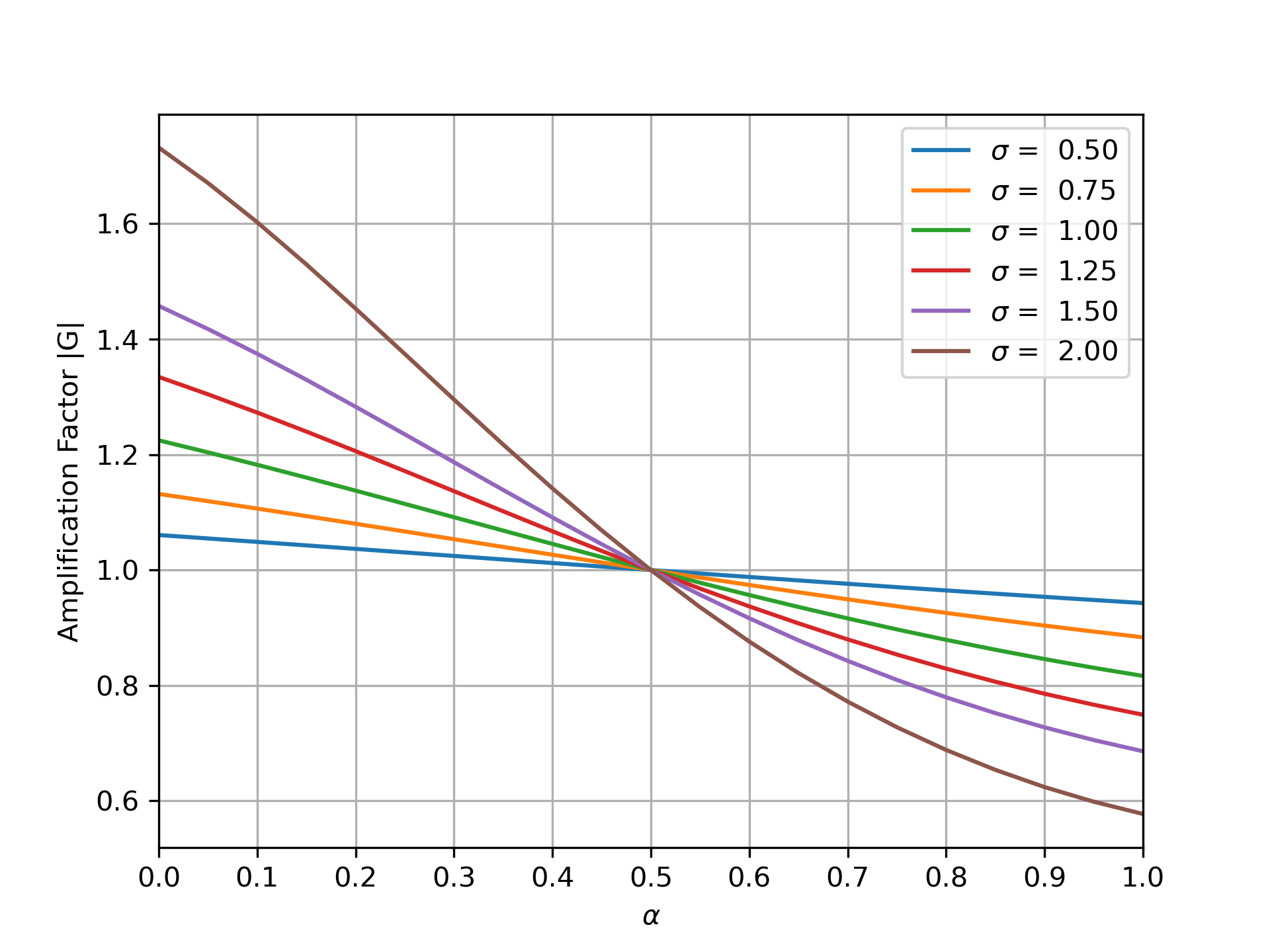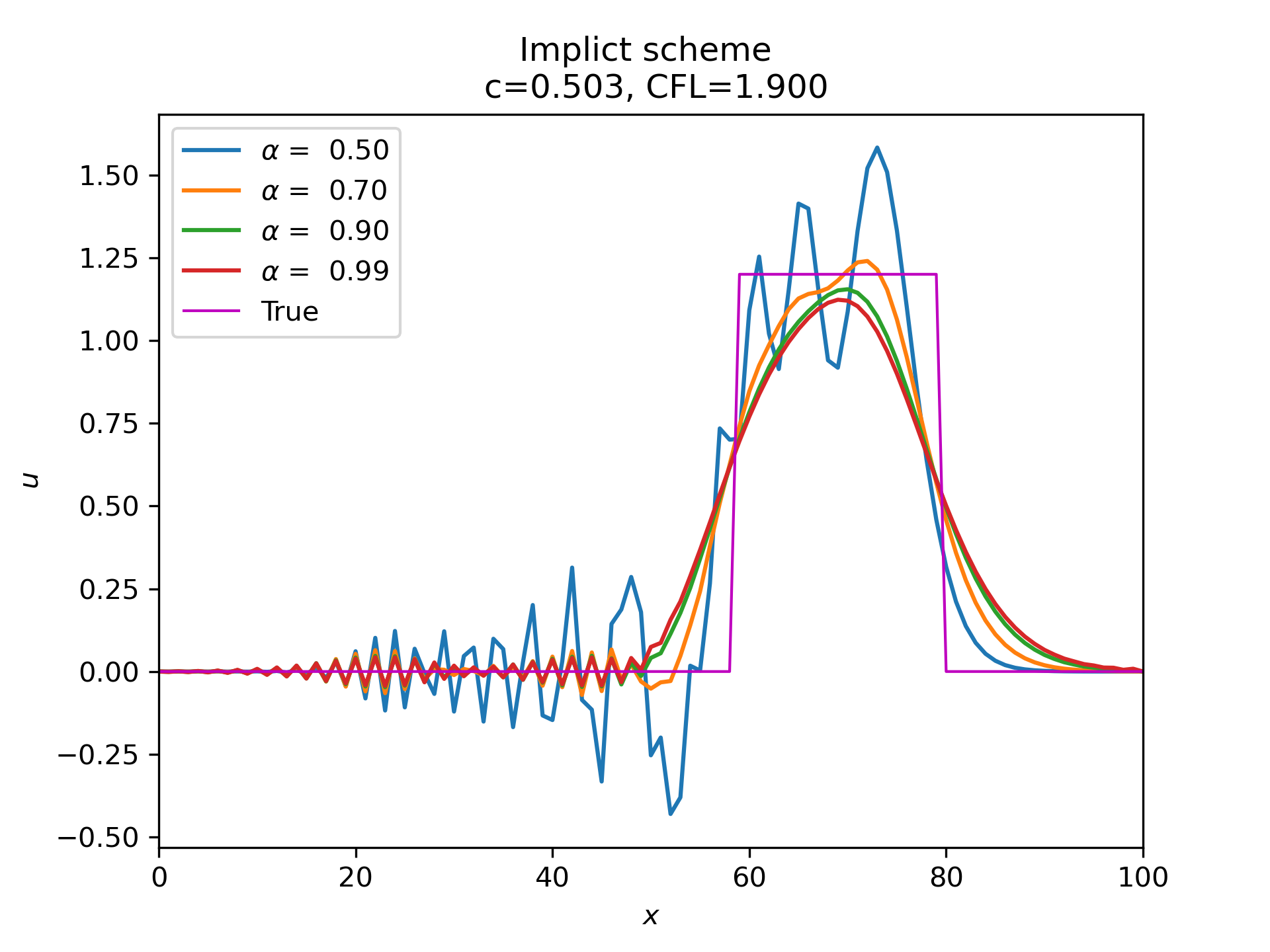The Implicit Scheme
Contents
The Implicit Scheme#
We can derive a general implict scheme by noting that the Crank-Nicholson scheme has the spatial derivatives at \(t^n\) and \(t^{n+1}\) multiplied by \(1/2\). We can generalize the formula in the following fashion:
The value of \(\alpha\) determines the nature of the scheme:
Consistency, stability and convergence#
The formula of the amplification factor (55) can be generalized following (56):
The effect of varying \(\alpha\) in the stability is shown below:

Fig. 6 The amplification factor of the general implicit scheme, for a range of CFL numbers and \(\alpha\).#
The implicit scheme \(\alpha > 0.5\) is damping and for \(\alpha < 0.5\), the scheme is unconditionally unstable. The damping effect of the numerical diffusion of the implicit scheme increases as the CFL number increases.

Fig. 7 The solution of the implicit scheme after 10 time steps for a top hat initial condition, for CFL numbers of 1.9 and \(\alpha=0.5, 0.7, 0.9, 0.99\), with \(\Delta t=2\) and \(\Delta x=1\).#